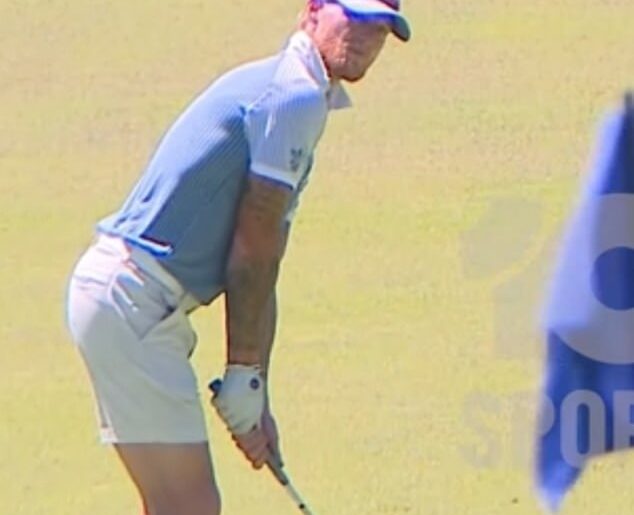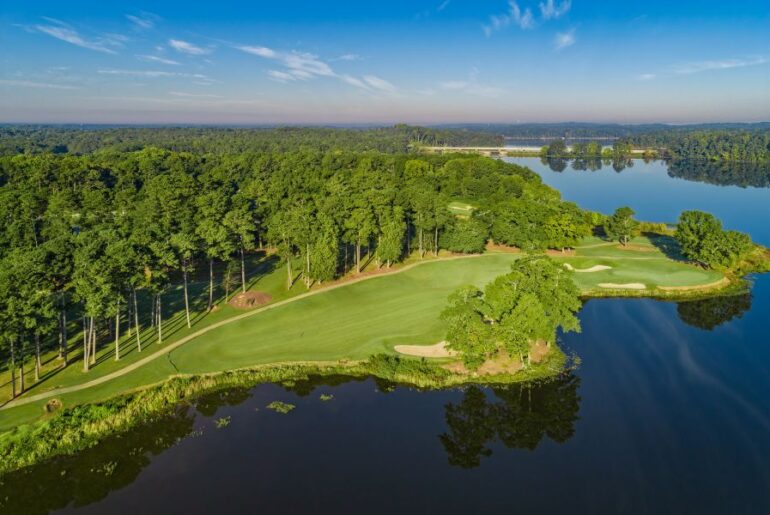The fall season has ended, and courses are closing for the winter, but Marquette golf doesn’t hibernate with the greenskeepers and golf carts.
Instead, the Golden Eagles spend their break before the spring season training in the Valley Fields bubble and the Athletic and Human Performance Research Center to stay warm and improve for the second half of the season.
Marquette’s fall season featured matches at several major championship venues, including Erin Hills in Hartford, Wisconsin, which hosted the 2025 U.S. Women’s Open, Southern Hills in Tulsa, Oklahoma, which hosted the 2022 PGA Championship and The Honors Course in Ooltewah, Tennessee, where Tiger Woods won the 1996 NCAA Championship.
The Golden Eagles finished sixth of 14 in their home event at Erin, eighth of 12 in The Clerico event in Oklahoma and 11th of 12 in The Invitational in Tennessee.
Coming off a season where Marquette reclaimed the Big East and won four other events as a team, assistant coach Jordan Niebrugge said the focus for the spring will be scoring more consistently.
His solution to improve over the winter the last two seasons has been what he calls ‘The Ladder,’ a system he created last season.
Niebrugge’s system ranks the players on Marquette’s team based on their individual strokes-gained statistics in various categories. His drills range from putting work and wedge gauntlets to short and mid-iron accuracy tests.
“Last year, I was brainstorming and came up with it,” Niebrugge said. “There’s infinite possibilities put into it, but we try to keep it pretty basic and, if we need to, we can go more in depth with it.”
The team members can move up the ladder by beating their teammates above them or defending the top of the ladder. Players can only challenge players within two spots of their current ranking, and someone can only be challenged a maximum of twice a week.
Junior Mason Schmidtke said one of his favorite ladder competitions is ’21,’ in which players alternate shots and the player closer to the hole gets points. Naturally, it’s the one he says he’s best at. He also likes birdie conversion, where each player takes 20 shots with the Trackman simulator from 75-125 yards, and then make a putt on the team’s practice green from the distance they have left according to the simulator.
“At this level, if you’re not competing, you’re taking steps backwards, so it really just gets you fired up and it makes you want to chase people on the ladder,” Schmidtke said.
The ladder helps to mix up his practice patterns and maintains his competitive fire.
“A lot of our practice is very mundane and routine-based,” Schmidtke said. “When we get to have a little bit of a change of pace throughout the week, it’s kind of like a nice reward. It fires you up to compete, and you’re not always going to do the same thing.”
Niebrugge centers the ladder drills around what the team needs to focus on most in the offseason. He sees short game and iron accuracy as the biggest things to tune up before the spring season starts in February.
“We’re a good driving team, you can see that through our stats,” Niebrugge said. “As far as scoring irons, short game and putting, that’s just a recipe to shoot lower scores.”
He said the team learned the most about its weaknesses from the tough courses it played during the fall season.
“We’ve been telling our guys, some of these tournaments, it’s not going to get much tougher competition from here on out, so we learn from it, we keep battling and come ready to play for the next one,” Niebrugge said.
Schmidtke said the tough courses help him learn and get better for the next events.
“The courses you go play, you’re going to get exposed if you don’t come with your full game,” Schmidtke said. “It might [make you mad] in the moment and make you feel bad about your game, but you realize a couple of days later that you now have the answers to the test to where you need to get better.”
Even though it’s very hard to recreate the undulation and length that Erin Hills has or the tricky tee shots of Southern Hills, Schmidtke said the one constant in his winter work is how he practices. So he drills that force him to think like he is on the golf course.
“A lot of what we do to simulate conditions that we’ll see in tournaments is going to be more based off of our routines and how we prepare and the culture that we build,” Schmidtke said.
This story was written by Trevor Hilson. He can be reached at [email protected] or @hilsontrevor on Twitter/X.







